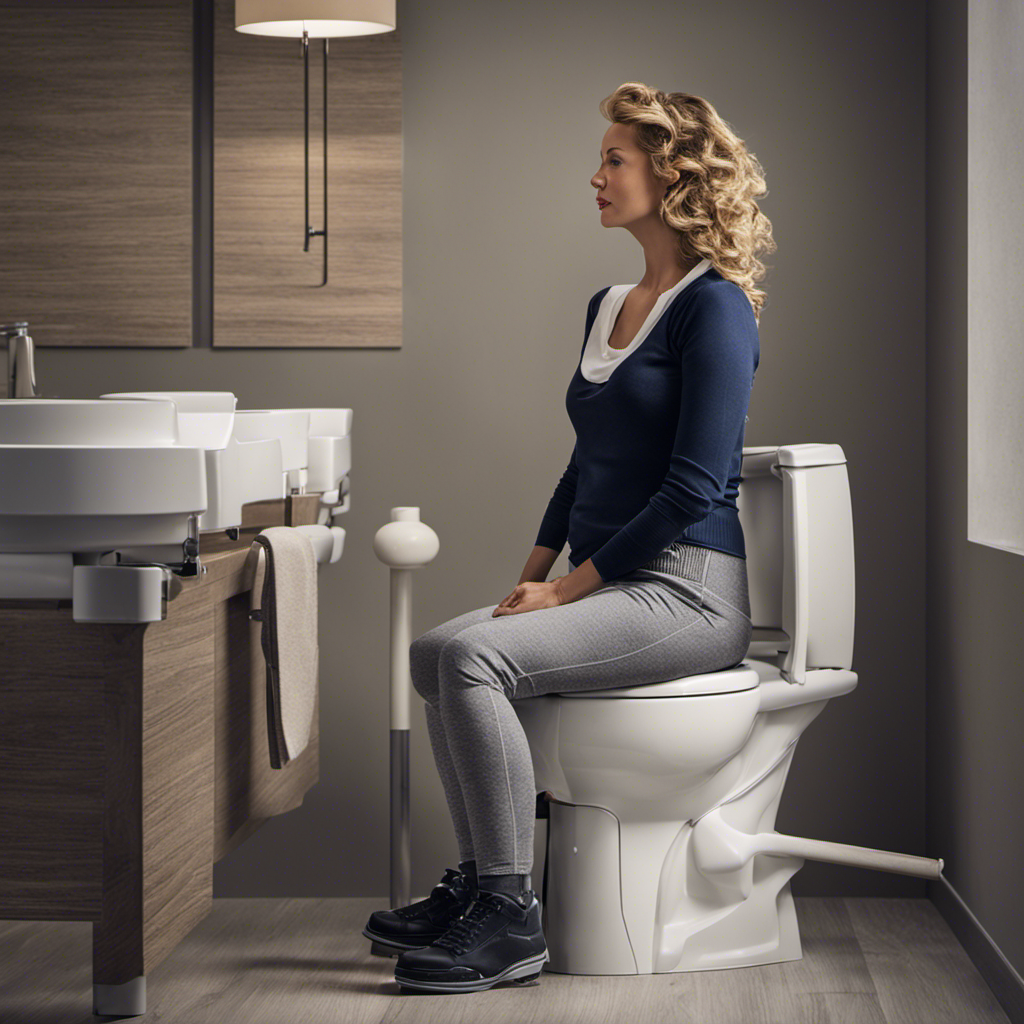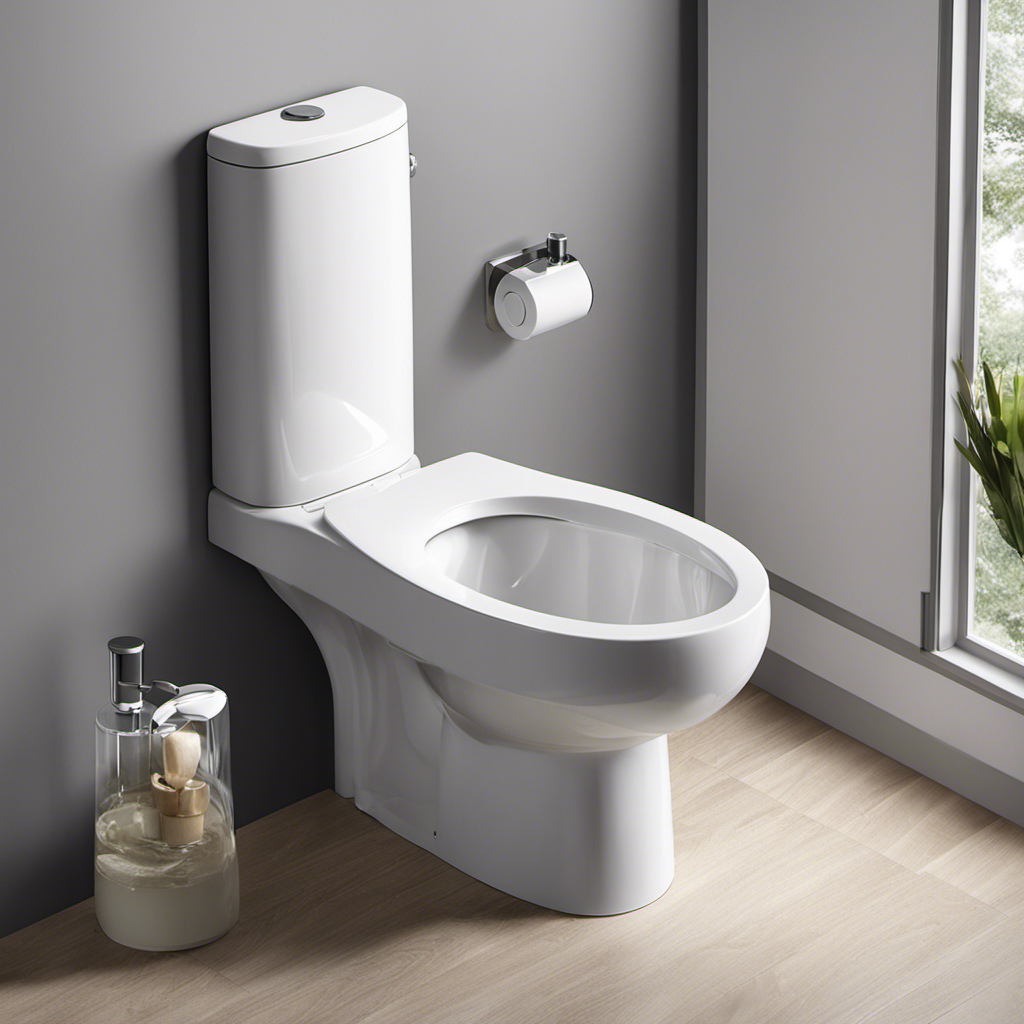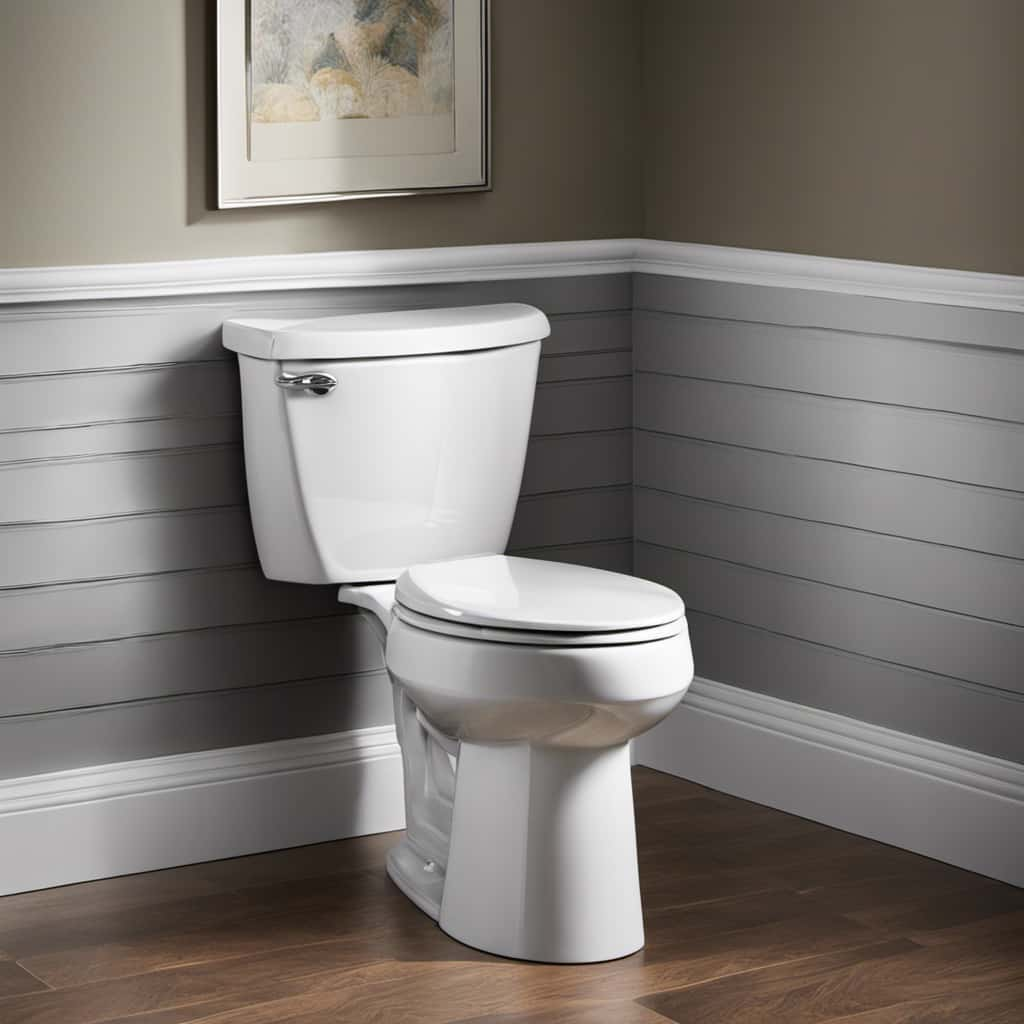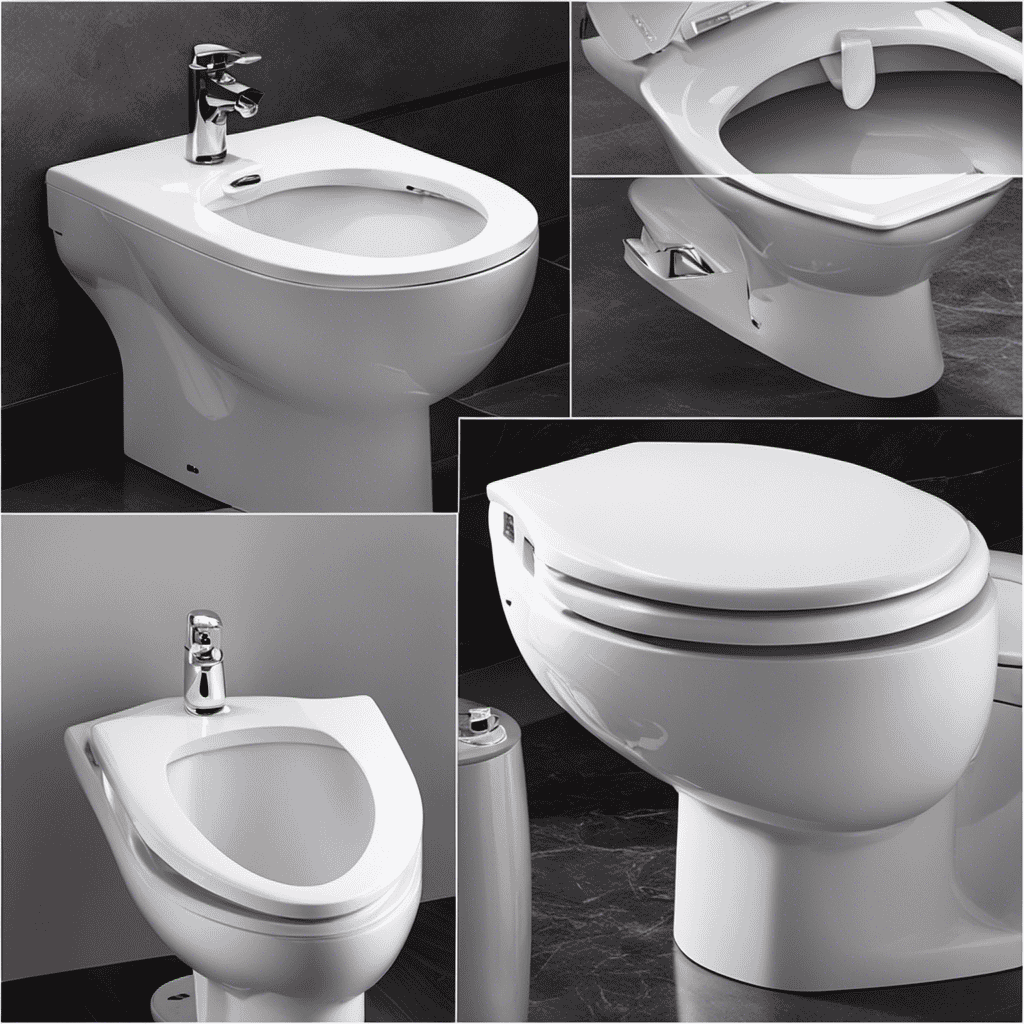Are you struggling to use the toilet while non weight bearing? Look no further! This informative article will guide you through the step-by-step process of using the toilet safely and effectively.
From preparing your bathroom to obtaining the right equipment, we’ve got you covered. With helpful tips on assisting with transfers, proper positioning, and managing personal hygiene, you’ll gain the knowledge and confidence to navigate this challenge with ease.
So, let’s get started on your journey to a more comfortable bathroom experience!
Key Takeaways
- Clear clutter and obstacles from the bathroom to prevent accidents
- Install grab bars near the toilet and in the bathtub or shower for stability and support
- Choose the right equipment such as raised toilet seats, commode chairs, and transfer boards for easier transfers
- Maintain proper body alignment and engage core muscles for stability while on the toilet
Preparing the Bathroom
Before using the toilet non weight bearing, make sure the bathroom is properly prepared. Bathroom organization is essential to ensure a safe and efficient experience. Keep essential items within easy reach, such as toilet paper, handrails, and any necessary assistive devices. Arrange the bathroom in a way that minimizes obstacles and maximizes accessibility.
Clear clutter from the floor and countertops to create a clear path. Additionally, consider installing non-slip flooring to prevent accidental slips or falls. Non-slip flooring provides traction and stability, reducing the risk of accidents in wet environments.
It is important to prioritize safety and accessibility in the bathroom to make the experience of using the toilet non weight bearing as smooth and risk-free as possible.
Obtaining the Right Equipment
When getting the right equipment, make sure you have the necessary tools for a non-weight bearing toilet experience.
Choosing the right size commode chair or toilet seat riser is crucial to ensure comfort and safety during this process. A commode chair with adjustable height and sturdy armrests can provide stability and support.
Additionally, a toilet seat riser can be used to raise the height of the toilet seat, making it easier to sit down and stand up.
Using the correct technique is also essential. When transferring onto the commode chair or toilet seat, make sure to pivot and slide instead of putting weight on the affected leg. This can prevent unnecessary strain and reduce the risk of falls or injuries.
Assisting With Transfers
Assisting with transfers requires proper technique and support to ensure safety and comfort. To effectively assist someone with transfers, consider the following techniques and mobility aids:
-
Transferring Techniques:
-
Use the proper body mechanics to avoid straining your muscles and causing injury.
-
Communicate with the person you are assisting to ensure they feel comfortable and secure throughout the transfer process.
-
Mobility Aids:
-
Utilize transfer belts or gait belts to provide additional support and stability during transfers.
-
Consider using transfer boards or slide sheets to minimize friction and facilitate smooth transfers.
By employing these transferring techniques and utilizing appropriate mobility aids, you can help ensure a safe and comfortable transfer experience for both you and the individual you are assisting.
Proper positioning on the toilet is also essential for maintaining comfort and preventing accidents.
Proper Positioning on the Toilet
When it comes to proper positioning on the toilet, two key points to consider are optimal body alignment and supportive seat options.
Optimal body alignment ensures that your body is in a position that promotes proper bowel and bladder function, as well as reduces the risk of strain or injury.
Supportive seat options, such as raised toilet seats or adjustable height seats, can provide added comfort and stability for individuals with mobility issues or limited range of motion.
Optimal Body Alignment
To achieve optimal body alignment while using the toilet non weight bearing, make sure you keep your back straight and your feet flat on the floor. This is important for maintaining proper body mechanics and ensuring that you have adequate body support during the process.
Here are some additional tips to help you achieve optimal body alignment:
- Engage your core muscles to provide stability and support to your spine.
- Use your arms to assist in lowering yourself onto the toilet seat and to help with balance.
- Avoid leaning forward or backward, as this can strain your back and affect your body alignment.
By following these guidelines, you can ensure that your body is properly aligned and supported while using the toilet non weight bearing. This will help prevent any potential discomfort or injuries that may arise from improper body mechanics or lack of body support.
Now let’s move on to discussing the different supportive seat options that can further enhance your toilet experience.
Supportive Seat Options
If you’re looking for a more comfortable experience while using the toilet, consider trying out some of the supportive seat options available. These seats are specifically designed to provide additional stability and support, making it easier for individuals who may have difficulty with balance or mobility.
One popular option is a raised toilet seat, which increases the height of the toilet and reduces the strain on your knees and hips when sitting down or standing up. Another helpful addition is grab bars, which can be installed near the toilet to provide a secure handhold for added stability.
By using these supportive seat options, you can improve your overall comfort and reduce the risk of falls or injuries.
Speaking of stability, let’s now discuss how to maintain balance and stability while using the toilet.
Maintaining Balance and Stability
Ensure you keep your balance and stability while using the toilet in a non-weight bearing position. This is important to prevent falls and injuries. Here are some tips to help you maintain balance and stability:
-
Balance exercises:
-
Practice standing on one leg for a few seconds at a time.
-
Try walking heel-to-toe in a straight line to improve your balance.
-
Using grab bars:
-
Install grab bars near the toilet to provide support when getting on and off the seat.
-
Make sure the grab bars are securely mounted to the wall to prevent accidents.
By incorporating balance exercises into your daily routine and using grab bars, you can enhance your stability and reduce the risk of falls while using the toilet in a non-weight bearing position.
Remember to always consult with a healthcare professional for personalized advice and guidance.
Managing Personal Hygiene
When it comes to managing personal hygiene without standing, there are several bathroom accessibility aids that can be beneficial.
These aids are designed to help individuals maintain their cleanliness and independence in the bathroom.
From bidets and handheld showers to long-handled sponges and toilet tissue aids, there are various options available to assist with hygiene tasks.
Hygiene Without Standing
To maintain hygiene without standing, you can use wet wipes or a bidet attachment.
Wet wipes are convenient and effective for cleaning yourself after using the toilet. They are specially formulated to be gentle on the skin and can easily remove dirt and bacteria.
Bidet attachments, on the other hand, provide a more thorough and hygienic cleaning experience. They use a stream of water to cleanse the area, eliminating the need for toilet paper and reducing the risk of irritation or infection.
When using wet wipes or bidet attachments, it is important to follow proper sitting techniques to ensure stability and safety. Additionally, using assistive devices such as grab bars or raised toilet seats can provide extra support and make the process easier for those with limited mobility.
Bathroom Accessibility Aids
You can easily improve bathroom accessibility by installing grab bars and raised toilet seats. These simple modifications can significantly enhance the safety and comfort of using the bathroom, particularly for individuals with mobility limitations or those recovering from injury or surgery.
Grab bars provide stability and support when entering and exiting the bathtub or shower, as well as when using the toilet. They should be securely installed on the wall, at a height that allows for easy gripping.
Raised toilet seats, also known as toilet seat risers, can be added to existing toilets to increase their height. This helps individuals with limited mobility to sit down and stand up more easily, reducing the risk of falls or strain.
When selecting grab bars and toilet seat risers, it is important to choose high-quality, durable products that meet safety standards and are suitable for the specific needs of the user.
Safety Considerations and Tips
It’s important to keep safety in mind and follow these tips when using the toilet non weight bearing.
-
Make sure to have grab bars installed near the toilet to provide stability and support. These can be helpful for transferring onto and off of the toilet safely.
-
Use a raised toilet seat to minimize the distance you need to lower yourself onto the toilet. This can reduce strain on your joints and muscles.
-
Choose a raised toilet seat with armrests for added support and stability while transferring.
-
Consider using a commode chair if a raised toilet seat is not available or suitable for your needs.
-
Use a transfer board if necessary to help slide from a wheelchair or mobility aid onto the toilet seat.
-
Keep the bathroom floor clear of any obstacles or tripping hazards to prevent accidents.
-
Use a non-slip mat or rug in front of the toilet to reduce the risk of slipping.
Conclusion
To wrap things up, you’ve learned some helpful tips on how to use a toilet while keeping your weight off.
By preparing your bathroom and getting the right equipment, you can ensure a comfortable experience.
Assisting with transfers and positioning yourself properly on the toilet will help you maintain balance and stability.
Don’t forget to manage your personal hygiene to stay fresh and clean.
Lastly, always keep safety in mind and follow the provided tips.
With these euphemistic suggestions, your bathroom routine will be a breeze!










